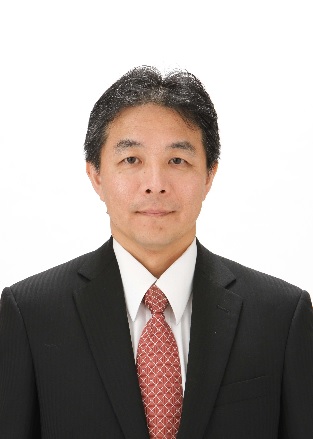Comprehensive List of Researchers "Information Knowledge"
Center for Embedded Computing Systems
- Name
- TAKASHIMA, Hiroyuki
- Group
- Title
- Designated Associate Professor
- Degree
- Doctor of Philosophy in Technology and Innovative Management
- Research Field
- Technology and Innovative Management / Embedded system / Innovation / Productivity

Current Research
Improvement of the productivity of embedded software engineers / Development of a SPF for automobiles
1. Research Overview
A built-in computer system used to implement the function of a mechanical device is called an embedded system. Embedded systems are compatible with integrated development (fine-tuned integration), which is a strength of our country. Indeed, after the World War II, automotive and home appliance manufacturing became key industries in Japan, which are based on integrated systems. The purpose of the development of integrated systems is to enhance the performance of devices by facilitating cooperation among many parts. For example, adjustments of various components are needed to provide a more comfortable experience when driving a vehicle, such as controlling the engine and transmission, as well as adjustments to the tires and suspension. Mutual cooperation among various engineers is often necessary to improve certain aspects of performance, which is facilitated by the advanced communication skills of the engineers responsible for these individual components.
Next, we consider the control of each individual component. For example, an engine converts the force generated by controlled explosions during the combustion of gasoline into rotational motion. Various operations are performed immediately based on information obtained by different sensors, which detect changes in physical parameters, such as the combustion pressure, oscillation, and rotational speed, where the engine is controlled by moving actuators such as injectors according to the results obtained. Thus, real-time control is very important in this example, where a small delay of several microseconds might affect the engine’s performance.
After the 1980s, the Western companies overcame the difficulties of integrated development; in consequence, the Japanese companies lost their advantage. Thus, we aim to improve the capacity to develop embedded systems in our country according to the following three themes: “Development of human resources for embedded systems,” “Improvement of the productivity and treatment of software engineers” who develop integrated systems, and “Development of a software platform” to support embedded systems.
2. Research Themes
1) Development of human resources for embedded systems
What skills are required by people who build embedded systems? As a member of a business community, in addition to the general interactions with other members and stakeholders of the organization, it is apparent that technical communication skills must be acquired, which are essential for integrated development. In addition, embedded software performs operations based on physical phenomena and it outputs physical changes as a result of operations. Thus, it is necessary to understand an embedded system in this specific manner. We will prepare an effective training method to improve these skills.
2) Improvement of the productivity and treatment of software engineers
What is the status of software productivity in our country? Are engineers satisfied with their treatment? If we compare the treatment of engineers in this country and other countries based on the ILO occupational statistics in 2005, the salaries of software engineers in our country are about half of those in the United States in terms of purchasing power parity, while they are about 20% lower than those in Germany and Korea. If we compare salaries within our country, they are lower than those of other professions, and they are not much higher than those of blue-collar workers who work in many manufacturing industries. Thus, the software industry is not appealing to highly skilled people in terms of salaries and working hours. We need to compare the productivity and treatment of engineers in the software industry, as well as their regulatory mechanisms and other features, with those in other countries, but we should also evaluate the productivity and treatment of Japanese engineers from the viewpoint of international competition. Based on these results, we will develop appropriate government policies and to establish a human resources strategy for the companies.
3) Development of a software platform (SPF) for automobiles
At present, the standardization of a SPF for embedded systems for automobiles is underway, which is being led by Europe. To maintain our competitive advantage in the automotive industry, it would be desirable not to depend on the SPF developed by European enterprises, but instead we should develop a competitive SPF, thereby allowing us to demonstrate the strength of integrated development in our country. Therefore, we need to devise a high quality SPF with excellent real-time performance.
3. Future development of research
We will proceed to improve the competitiveness of embedded systems by improving the quality of engineers involved in the embedded software production, establishing workplace systems where engineers can work with pride, and by developing an SPF for automobiles.
Career
- Hiroyuki Takashima was working in Denso Corporation from 1986 to 2011.
- He received a doctor’s degree from the Graduate School of Policy and Management, Doshisha University in 2008.
- He was General Manager of SAE Management Co., Ltd. from 2011 to 2013.
- Since 2013, he has been an associate professor of the Center for Embedded Computing System, Graduate School of Information Science, Nagoya University.
- Since 2014, he has been a Joint Researcher of the Institute for Technology, Enterprise and Competitiveness, Doshisha University.
Academic Societies
- The Japan Society of Mechanical Engineers
- The Society of Project Management
- Business Model Association
- The Japan Society for Business Succession
- Society of Automotive Engineers of Japan
Publications
- Study on architecture of ECU for automobile, Transactions of the Japan Society of Mechanical Engineers. C, 74(743) pp.1758-1764, 2008
- The Battery Monitoring Unit for Hybrid Vehicles, Journal of Society of Automotive Engineers of Japan 61(2), pp.40-44, 2007
- Business Succession from the Viewpoint of Organization Behavior, Journal of Business Succession Vol. 1, pp.78-94, 2012








